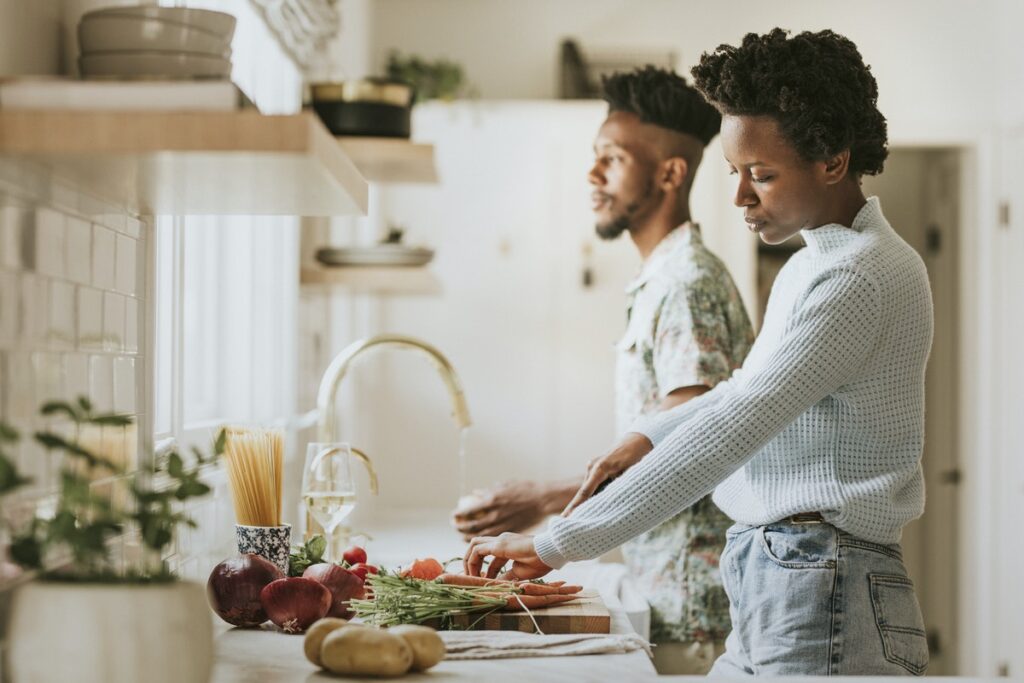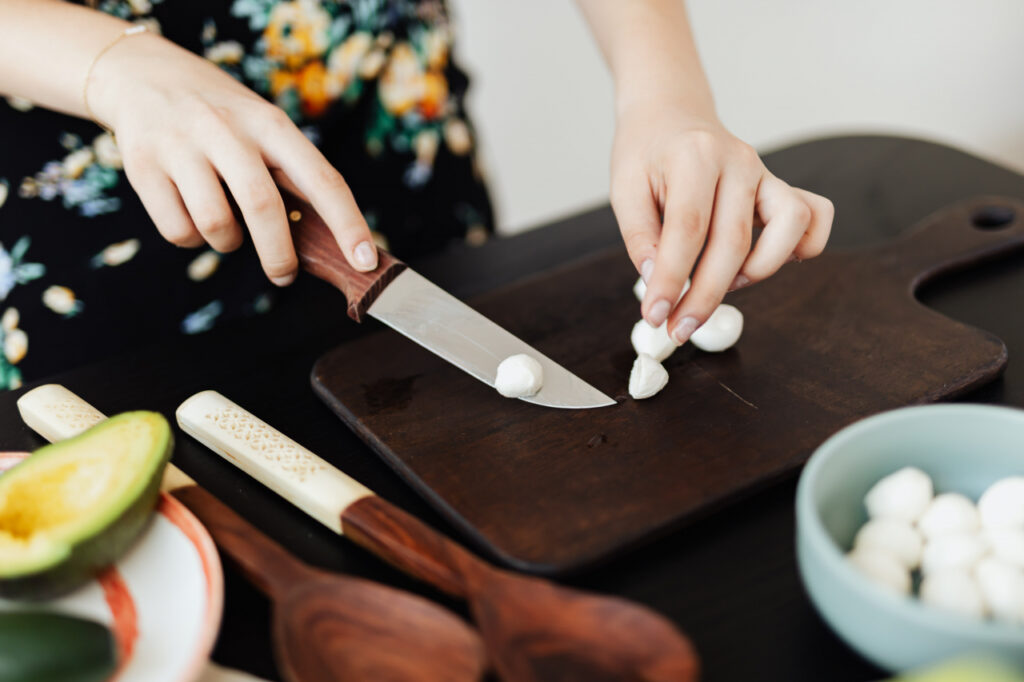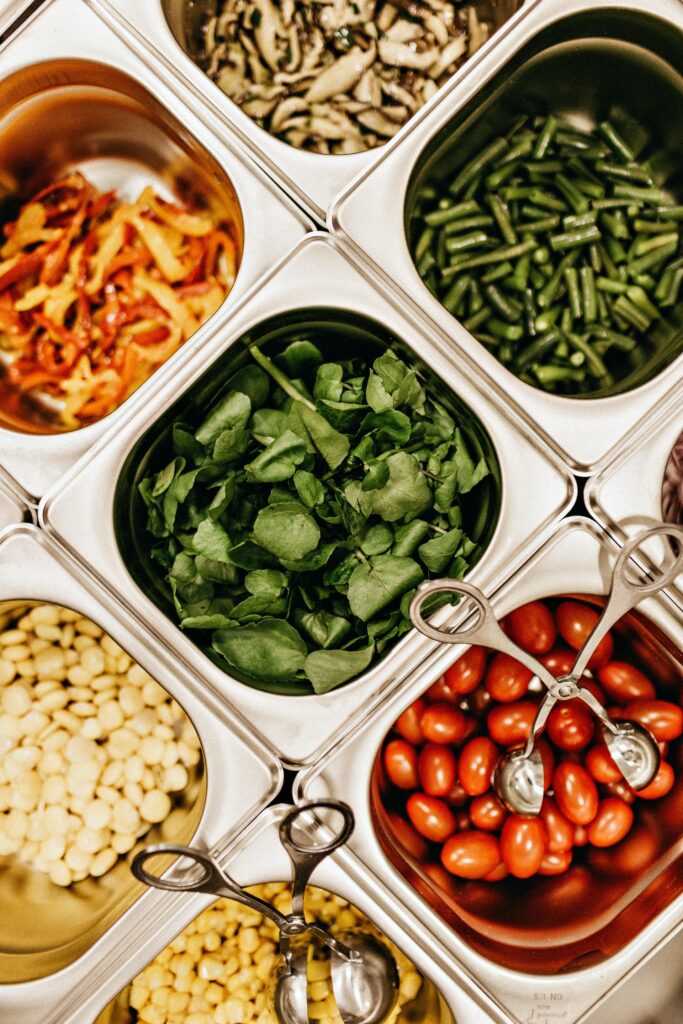
Though some might argue that the bedroom has its fair share of earth moving experiences, we think it’s safe to say that the kitchen is both the most important and the most volatile part of the house.
Hear us out. It’s the engine room of the home and family, and where the magic truly happens. In most homes, the kitchen is its hub and a hive of activity, bustling with delicious food and the most meaningful of interactions. However, it’s also a combustible place, full of danger posed by sharp knives, open flames, cross contamination and the rest.
Sometimes we’re ashamed by the amount of destruction we cause in the process of cooking a meal. For the sake of our sanity, our kitchen, our health and the deliciousness of our dinner, we’ve consulted the professionals on this one; here are 5 chef’s workflow hacks to make cooking at home easier.
SECURE YOUR CHOPPING BOARD
First things first and before we get slicing, dicing, julienning and brunoise-ing – let alone before any food is actually cooked – it’s essential we set up our workspace correctly so cooking is easy, simple and safe.
This all starts with securing your chopping board correctly. Much like the ritual of putting on your apron, this represents a statement of intent at the start of the cooking process before each meal, and signifies you’ll be doing things properly. All you need to do is divide a jay cloth or piece of kitchen towel into four, wet them a little, and place each piece under the four corners of your board. Alternatively, you can place a folded dishcloth underneath. All this means is that when you’re wielding a sharp (also essential for safety reasons) knife, your board won’t slip and slide around beneath you. No professional kitchen chef would do without securing theirs.

PLACE A PORTABLE BIN CLOSE TO HAND
Cooking cleanly, safely and efficiently is all about economy of movement. The fewer movements you can make to fetch ingredients, chop them, cook them, season them or dispose of them, the better. Every second counts in a professional kitchen, and those who stay grounded, with everything an arm’s reach away are the ones who cook best. It’s as simple as that.
When preparing your ingredients for a meal, have a large bowl or plastic tub right next to your board, so you can dispose of items easily without having to move. Once it’s full, take a short trip to the bin and repeat. Though it seems like the most minor change to your habits, the accumulative time saved really makes a difference. Suddenly, with efficiency improved, cooking starts to feel fun.
TIDY AS YOU GO
We’ll put this plainly; you need to tidy and wash up as you go. No one wants to see clutter and debris everywhere as they plate up their meal, knowing a huge cleaning up job awaits them when they’re full and satiated by dinner. There’s no more demoralising feeling. Do your best then, to wash up, clean and tidy as you go – pan by pan, spoon by spoon, spatula by spatula – to ensure there’s a minimal amount left at the end of your cooking. Sure, in a professional kitchen this is often done by a Kitchen Porter – the absolute heroes of the kitchen – but here, we’re afraid to say, it’s all down to you.
Though dishwashers (the appliance kind) are a godsend, if you’re cooking for one or two people, you should only have a few pans to wash, and doing this by hand is sometimes more time coherent. Water is a breeding ground for bacteria so do make sure you keep them in a dish drying rack or over a dish drying mat to dry completely.
Aesthetically, a clear, tidy space equals an even tidier mind, and your cooking is sure to benefit.

MISE EN PLACE MASTERY
Mis en place – in French loosely meaning ‘everything in its place’ – is a phrase every professional chef will be familiar with.
All this means is that you approach cooking in a meticulous, precise way. Lists are made, all ingredients and tools collected ahead of time, and you get as much of your slicing, chopping, marinating, mincing and the rest done in advance, too, in the most time-efficient manner possible.
Then, everything is boxed up and put in its optimum position for ‘service’ – the salt is to the left of the stove, you’ve several tasting spoons in a tub of warm water, your pans are all lined up so their handles are facing the same way – making cooking as effortless as possible. Or rather, as effortless as it can be with twenty checks on the rail and a head chef demanding several simultaneously.
Master this mindset and the delicious dinners will come.

COMPARTMENTALISE & CONDENSE
Speaking of boxing up pre-prepped ingredients, our final tip is one of space saving, both in cupboards and fridges. Do yourself a massive favour and invest in several sizes of plastic tub with corresponding lids; one litre and two litre, as well as the traditional takeaway size, are industry standards. Then, you can box up ingredients, both raw and prepped, in a way which slots into your fridge and cupboards with seamlessly and with ease. Simply label them up for easy access, particularly if they’re placed on open plan kitchen shelves, and, once again, you’re nurturing that meticulous mindset so important for safe, delicious cooking.
Should levels of a particular ingredient be depleting in its box, transfer everything into a new sized tub which corresponds to the amount you have left. Then, you can instantly recognise what ingredients are running low and what you still have in abundance.





